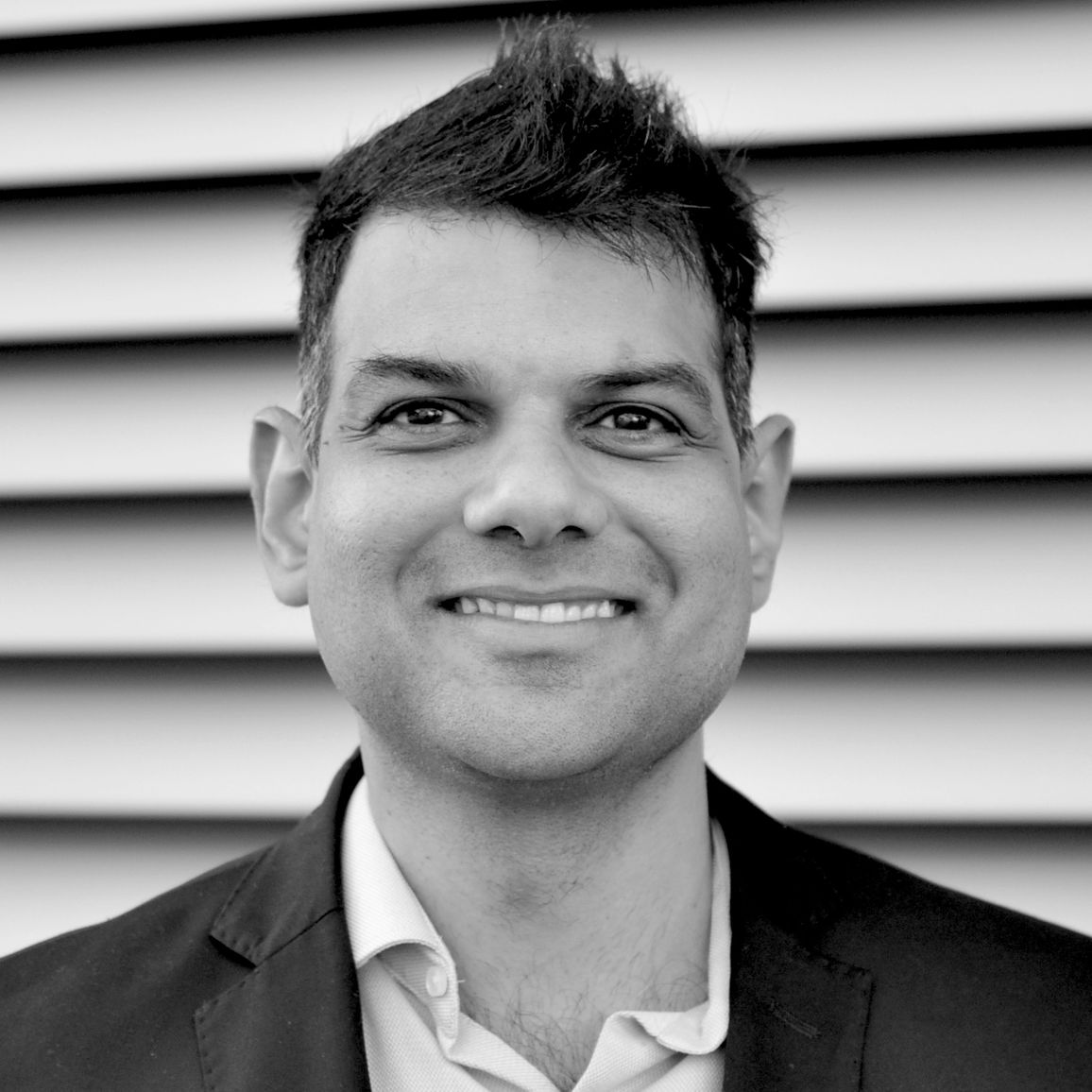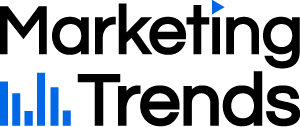Prashant Mohan

At Marketing Trends we are discovering what drives Australia’s top marketers. Prashant Mohan is CMO at Sharesight, an investment portfolio tracking software used by over 250,000 DIY investors. In this interview, he tells us why being a marketer and an investor are two very similar things and his “Life of Pi” career journey, starting in engineering & maths and finding his way to marketing.
Read his full story here ↓
Career & professional background
Prashant, how did your career in marketing start?
The best analogy of my career story is that of Life of Pi. My safe home was in engineering and maths, which I studied at university, and my first role was at Infosys, a software company.
I then moved to Philips in Consumer Electronics, working as a test engineer for home automation systems. Working there, I came in close contact with Product Management.
Back then, I was based in Bangalore, India, and our Product Manager used to visit us from Leuven, Belgium, and I was fascinated by the customer stories and use cases driving our product strategy. That’s when my love for marketing really began.
I went on to do an MBA at INSEAD, a business school in France and Singapore. My wife and I were both in the same class in Singapore when Westpac came recruiting for an MBA program and that's actually how we landed in Australia.
Working at Westpac, I got exposure to many different areas: business strategy, operations and risk management.
My breakthrough came when I joined Google as Strategy and Sales Operations Manager for AUNZ, creating strategies for sales teams to pitch marketing solutions to Aussie and Kiwi marketers.
By this time, in my Life of Pi analogy, I was truly sailing in the rough seas with a Royal Bengal Tiger!
My first official role in marketing came later at Smartgroup. Both the CEO and CMO gave me a chance to join their team because I had transferable data and analytical skills from my previous experiences. At Smartgroup, I was able to develop my skills as a B2B marketer.
This period of my life in my story analogy would be landing on the shores of my new home. Still weak and tired - exhausted by the big seas and the company of a dangerous predator on my boat.
If you hadn’t pursued a career in marketing, in which other industry do you think you might be?
I worked in Sales operations and Strategy roles before my break into marketing. I think I would’ve continued in those types of roles. Yet, my natural instinct is to hide behind spreadsheets, and analyse a lot of data. I must clarify: Business data, not accounting data!
I tried my hand at coding prior to that. While I was okay at it, I think the thrill of spreadsheets and the amount of value they create in the business world made me gravitate more towards them.
Could you tell us about your role as CMO at Sharesight?
At Sharesight, I am leading a team of extremely talented marketers. We have set ourselves up through the lens of the funnel in combination with channels. So as a marketing team we:
- Acquire free users to sign up to Sharesight via multiple channels.
- Educate them through content marketing
- Convert them in-funnel through product education
- Work with and grow our partner ecosystem
- Measure everything we do through analytics and attribution
I see a CMO’s role more like that of an investor or a fund manager. You spend a lot of time in asset or channel allocation with specific strategies in mind. Some will yield more immediate results while some are investments in the future.
A key part of my job is also to tell the story of Sharesight - setting our goals and strategies in line with our brand purpose, mission and core values.
When you define some of the top-level items, it becomes easier to apply that filter to a lot of decision-making. It drastically reduces cognitive load, and we achieve a good flow.
Marketing & Industry Trends
What type of impact has COVID- 19 had on the fintech industry?
COVID gave a massive boost to investing, in general. All stock market investing went up, and because of the synchronous lockdowns everywhere, we have a product-market fit.
A lot of new investors got into stock market investing. While those people are not our primary target segments, there was a flow of effect on the wider investment industry as a whole. Demand for portfolio tracking solutions went up a few fold.
From a marketing point of view, these external events always help boost demand. The important role we play is in being present, in a meaningful way, in as many places as possible. This allows us to fulfill this demand through our product and solution.
Our mission is to empower investors with superior performance tracking, so that they can make smarter investment decisions.
True to this mission, we were extremely pleased to help investors engage with their wealth management process in a rational and scientific manner, in a time of a lot of emotional roller coasters.
What is the most exciting trend or innovation happening in your field in terms of growth?
There’s never been a more exciting time to be a self-directed investor. There’s so much power being devolved to the person, from institutions and middlemen. We saw the power of the individuals and collaboration through social networks, when the GameStop mania happened. These were games only the big boys in town could play.
Having said that, there’s a lot of emotion, frenzy and the whole “David vs Goliath” narrative that can derail the long-term investment process. By being calm and rational, investors can help people create wealth for themselves.
There are so many ways in which we can all educate ourselves on investing - through podcasts, YouTube and even TikTok. Yet, like with everything else, one needs to be careful with whose advice one follows.
When any democratisation occurs, it’s the good people as well as the bad influencers that infiltrate the system. It’s so important to differentiate the wheat from the chaff.
As a marketer, what do you believe is the biggest challenge facing your industry in the future?
Being a marketer and being an investor are similar things. You have to define what a core strategy is and what satellite strategies are. Some things never change, while other things in the periphery are always trending in one way or another.
As humans, we are hardwired to receive communication and education in the form of stories. Corroborees have been the form of communication in the indigenous culture for over 60,000 years. That's a core human trait.
On the other hand, the data-driven approach to everything is new but also essential. At Sharesight, that’s what we, advocate investors, do to understand portfolios. That’s the language of business and science, and it’s important to speak that language. Having a good understanding of the drivers of business is core.
The challenge of the future is to balance these two seemingly contradictory forces. Once we realise that as marketers we need to speak to both system 1 and system 2 of people’s brains, it becomes less of a contradiction and more of a harmonious complement.
Tools, recommendations & sources of inspiration
What does a typical day look like for you? How do you structure your week?
I typically start every morning with reviewing the numbers from the previous day. That helps me get into the day’s groove and set the pace for all the things I need to get done for the day.
On Monday mornings, I do a more detailed dive into the happenings of the previous week through the lens of the campaigns, countries and channels. Sometimes there are calls with partners in North America which happen quite early in the morning.
I also catch up on all the investing and marketing news from the previous night in my first 30 minutes. From there, I catch up with each of my team members through the course of the day.
Between meetings, I spend a lot of time writing up campaign or product ideas and planning marketing activities for the following 90 days.
We have a daily stand up at the end of every day to set an agenda for the following day, and help out team members who might be needing assistance to progress certain projects.
What brands do you take inspiration from?
Among subscription businesses, I have loved how Spotify brings the brand to market. I love how they are clever with using personalisation, and data to make you feel special as a subscriber. I’m also a big fan of Basecamp - their ethos, values and writing is inspirational.
Among the more traditional brands, I love Air New Zealand. They exploit the brand of New Zealand itself really well to present a pleasant flying experience. Their story telling even with their inflight safety announcements is admirable.
Software and tools recommendations: what is the one software you can’t work without and why?
Not many people would say this, but I love the Google ecosystem. I still remember the awe with which I watched every key stroke of a collaborator thousands of Kms away in a different continent.
I think Google Docs, as a tool for collaboration, is a must have. Same goes with slides and spreadsheets - and they keep improving every day.
What are three resources you would recommend for anyone working in your field?
2 marketing related books I’d recommend are:
- "Storybrand" by Donald Miller: It's a very practical guide to frame your stories so that they are understood by your audience.
- "How Brands Grow" by Byron Sharp: I find it a great evidence-based piece of work that helps marketers focus their attention on the right things.
I have truly benefited from listening to "Everyone Hates Marketers" by Louis Grenier. I’d highly recommend that marketers have a listen to the experts and the line of questioning that Louis takes during the show.
A more psychology oriented podcast I’d recommend is "Hidden Brain” by Shankar Vedantam. It's a fantastic deep dive into our deep minds. It helps us understand why we do what we do, and more importantly how to navigate biases.


